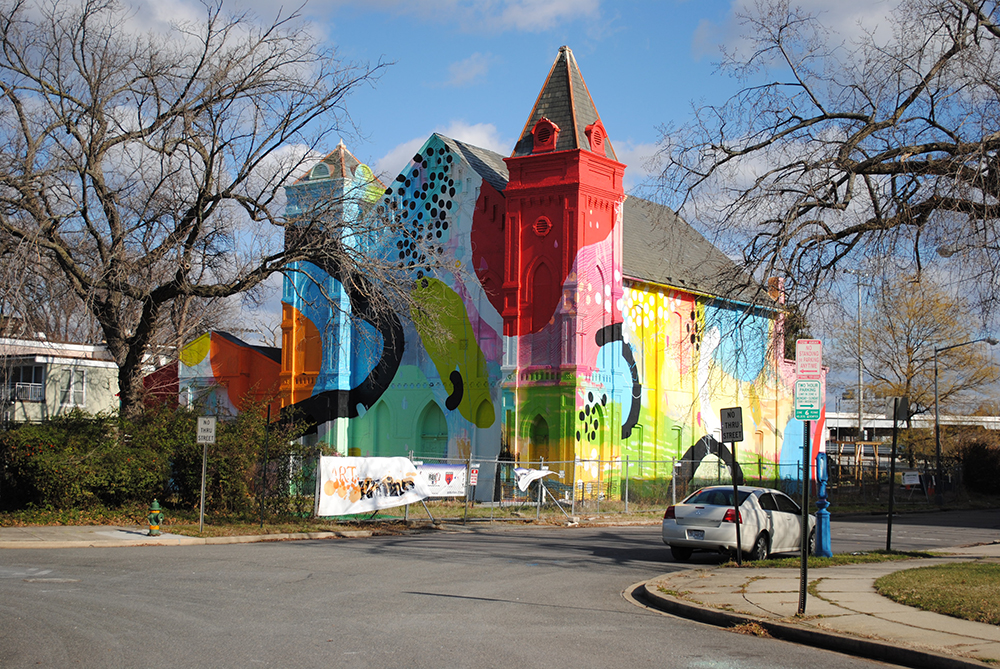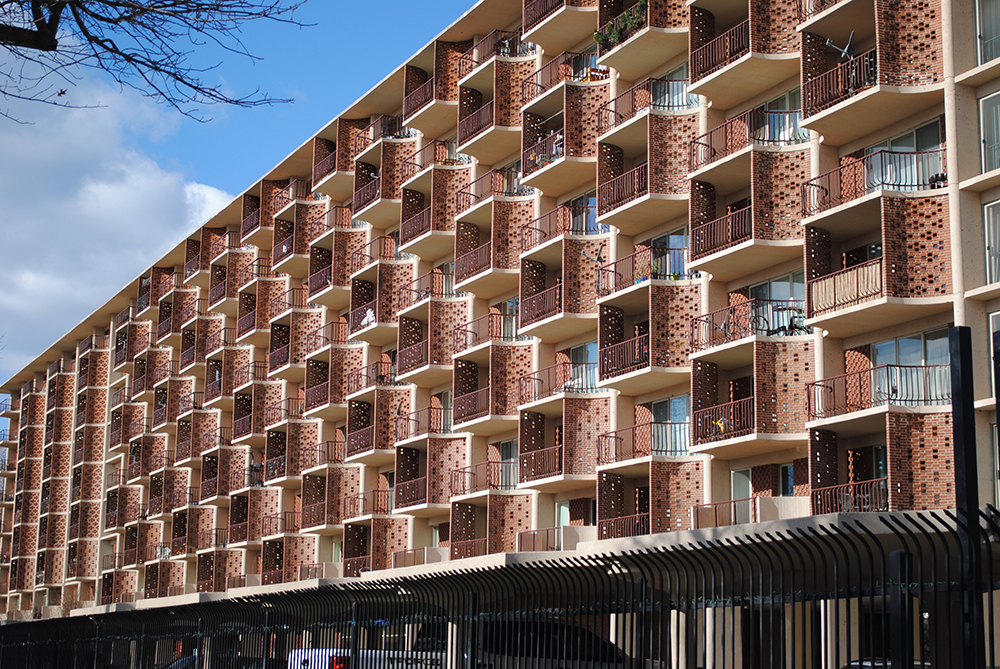The Randall School itself has been intermittently poised to become a boutique something or another since 2006, when the Corcoran and Monument Realty bought it. Neither of those institutions is doing so well right now, but Telesis and the Rubell Foundation, a major contemporary art collection, have plans to put an apartment-museum building behind the heritage buildings, with Bing Thom designing. We shall see, yes? The other is Capitol Park Plaza, a midcentury building, which has a surprisingly warm facade for the period.
No surprise to discover that this is one of the buildings in the area designed by Chloethiel Woodard Smith. A noted local architect who happened to be a woman at the time when that raised eyebrows, Smith was quite shrewd here, registering the slab form with details that let humans comfortably occupy austere forms. First, she used tiles to enclose private porches. These balconies are massed in vertical lines at either end and staggered in the middle. This detail diminishes the monotony and overwhelming scale of the building without losing the exhilaration of long lines. The balconies also allow the roof to extend over the building envelope, reducing leaks, while keeping a strong outer volumetric edge that expresses the modernist formal fixation of a flat, uniform edge. The pure geometry of modernist architecture can be difficult or expensive to register in actual building, so in a compromise, Smith simply implies it.


